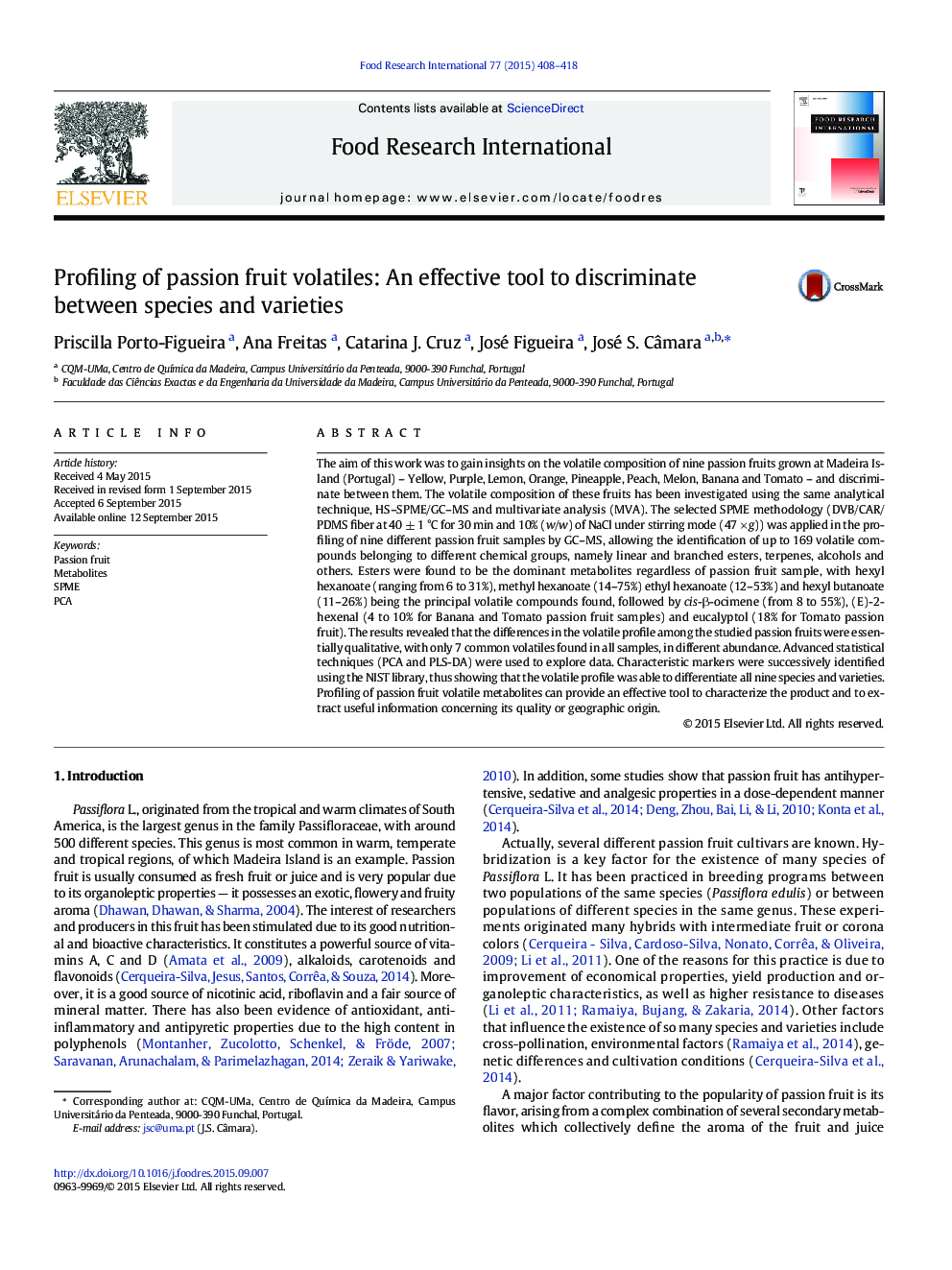| کد مقاله | کد نشریه | سال انتشار | مقاله انگلیسی | نسخه تمام متن |
|---|---|---|---|---|
| 4561359 | 1330641 | 2015 | 11 صفحه PDF | دانلود رایگان |
• Volatile profiling of nine different Passiflora varieties by the same analytical technique is reported.
• A powerful approach combining SPME and MVA data was able to discriminate different Passiflora L. varieties.
• Identification of 169 volatiles indicated that only seven were common to nine varieties.
• Ethyl esters were found to be the most dominant metabolites across all passion fruit varieties.
• First time that nine different Passiflora L. varieties are analyzed using the same analytical technique
The aim of this work was to gain insights on the volatile composition of nine passion fruits grown at Madeira Island (Portugal) – Yellow, Purple, Lemon, Orange, Pineapple, Peach, Melon, Banana and Tomato – and discriminate between them. The volatile composition of these fruits has been investigated using the same analytical technique, HS–SPME/GC–MS and multivariate analysis (MVA). The selected SPME methodology (DVB/CAR/PDMS fiber at 40 ± 1 °C for 30 min and 10% (w/w) of NaCl under stirring mode (47 × g)) was applied in the profiling of nine different passion fruit samples by GC–MS, allowing the identification of up to 169 volatile compounds belonging to different chemical groups, namely linear and branched esters, terpenes, alcohols and others. Esters were found to be the dominant metabolites regardless of passion fruit sample, with hexyl hexanoate (ranging from 6 to 31%), methyl hexanoate (14–75%) ethyl hexanoate (12–53%) and hexyl butanoate (11–26%) being the principal volatile compounds found, followed by cis-β-ocimene (from 8 to 55%), (E)-2-hexenal (4 to 10% for Banana and Tomato passion fruit samples) and eucalyptol (18% for Tomato passion fruit). The results revealed that the differences in the volatile profile among the studied passion fruits were essentially qualitative, with only 7 common volatiles found in all samples, in different abundance. Advanced statistical techniques (PCA and PLS-DA) were used to explore data. Characteristic markers were successively identified using the NIST library, thus showing that the volatile profile was able to differentiate all nine species and varieties. Profiling of passion fruit volatile metabolites can provide an effective tool to characterize the product and to extract useful information concerning its quality or geographic origin.
Journal: Food Research International - Volume 77, Part 3, November 2015, Pages 408–418
